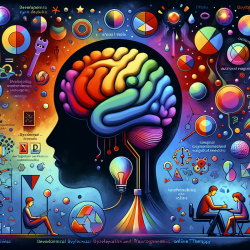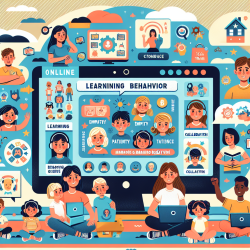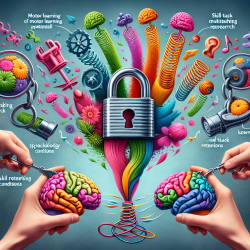As a practitioner working with students who have developmental dyslexia (DD), understanding the underlying causes of this complex learning disability is crucial for effective intervention. Recent advancements in neurogenetics and brain imaging offer exciting opportunities to enhance our understanding and treatment of DD.
The Role of Neurogenetics in Dyslexia
Developmental dyslexia is characterized by difficulties in reading despite adequate intelligence and educational opportunities. While the condition is known to have a genetic component, the pathways from genes to behavior remain largely unexplored. The research article titled Neurogenetics of developmental dyslexia: from genes to behavior through brain neuroimaging and cognitive and sensorial mechanisms delves into these pathways, offering insights that can be transformative for practitioners.
Key Insights from the Research
- Genetic Susceptibility: The study identifies several DD-susceptibility genes that affect neuronal migration and brain circuitry. Understanding these genetic factors can help identify children at risk earlier.
- Brain Imaging as a Tool: Imaging techniques like MRI provide a non-invasive way to study brain structure and function in individuals with DD. These techniques reveal altered brain regions associated with reading difficulties.
- Interdisciplinary Approach: Combining genetic data with neuroimaging allows for a more comprehensive understanding of DD. This interdisciplinary approach helps connect genetic variants with specific cognitive deficits.
Implementing Research Findings in Practice
By integrating these research findings into your practice, you can improve diagnostic accuracy and tailor interventions more effectively. Here are some steps you can take:
- Stay Informed: Keep up with the latest research in neurogenetics and imaging studies related to dyslexia.
- Use Technology: Consider incorporating brain imaging data into your assessments to better understand each student's unique challenges.
- Collaborate: Work with geneticists and neuroscientists to develop comprehensive intervention plans that address both genetic and cognitive aspects of DD.
- Advocate for Early Screening: Promote early screening programs that incorporate genetic testing and brain imaging to identify at-risk children sooner.
The Future of Dyslexia Research
The integration of genetics, neuroimaging, and cognitive science holds great promise for unraveling the complexities of dyslexia. As new technologies and methodologies emerge, practitioners will be better equipped to provide personalized interventions that cater to the specific needs of each student.
To read the original research paper, please follow this link: Neurogenetics of developmental dyslexia: from genes to behavior through brain neuroimaging and cognitive and sensorial mechanisms.










